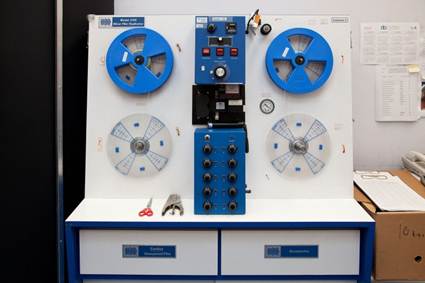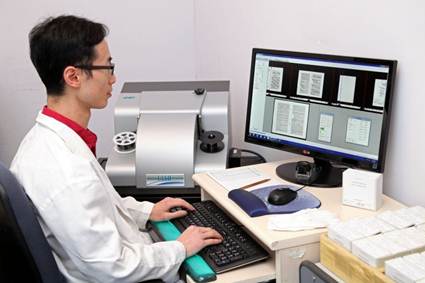
Making surrogate copy and reformatting
Making archival materials accessible is the main objective in preserving them. However, heavy and excessive use of the materials will shorten their life significantly. Producing surrogate copy and reformatting are the effective means in resolving the conflict. Access policies can be laid to protect the unnecessary use of original materials by accessing the surrogate copy instead. Yet the quality of the surrogate copy should be ascertained to contain as much as possible the information in the original. After making surrogates or reformatting the information content, so long as the original materials are designated as having archival value, they should still be kept and never be disposed of.
Photocopying
For paper records, photocopying (if carried out with archival quality papers) can preserve the information content of records. For records on unstable paper, such as thermal paper or heavily deteriorated paper, photocopying is a necessary step to ensure the survival of the information content. Use of stable alkaline paper and carbon toner or carbon pigment ink will help to ensure the long-term preservation of the surrogate copy. All preservation photocopies should be made by black and white copy machines since colour photocopies cannot survive in the long term. Moreover, one should avoid using the “auto-feed” feature of photocopying machines, otherwise, the original can be easily damaged without any sign.
Surrogate copy of audiovisual items
Making surrogate copy from audiovisual items is the best practice in holding maintenance. The image and/or sound content should be copied by an appropriate, well-maintained and functioning machine to the same medium as the original. The quality of the copy should be checked against the original. Attention should be paid to common problems in signal delay in transfer such as out-of-sync between image and sound signals, jitter in image, “click and crackle” in audio, low-frequency hum and loss of high frequency components due to excessive copying of analogue copy, though signal degradation due to generation loss is inevitable. The access status of the surrogate and the original should be distinguished.
Reformatting
The continuous access to the information contained in an archival record depends on the continuous accessibility of the medium and format of the information that can still be understood by the contemporary users. As time goes by, it is perhaps necessary to transfer the information to a new format or even a new medium that is most viable and accessible in the current time. This process is called reformatting. Paper archival records can be reformatted to microfilms or digital images. Microfilms of the silver-gelatine on polyester based film type have been known to have an extended life expectancy of more than 500 years if they are kept in the recommended archival storage condition. There are a number of commercial microfilm service providers available in the market. They usually provide digital scanning service to transform the paper archives to digital files as well.
Although digital images are very convenient for access, their long-term preservation poses a challenge to most institutions for their accessibility cannot be guaranteed for more than a decade. They are subject to technological obsolescence, even though the physical storage media are well preserved. On the other hand, microfilm is a stable technology and a proven method for preserving paper archive. Therefore, it is prudent to adopt the hybrid approach by producing both microfilm (analogue format) and digital image (digital format) for the same archival record.

